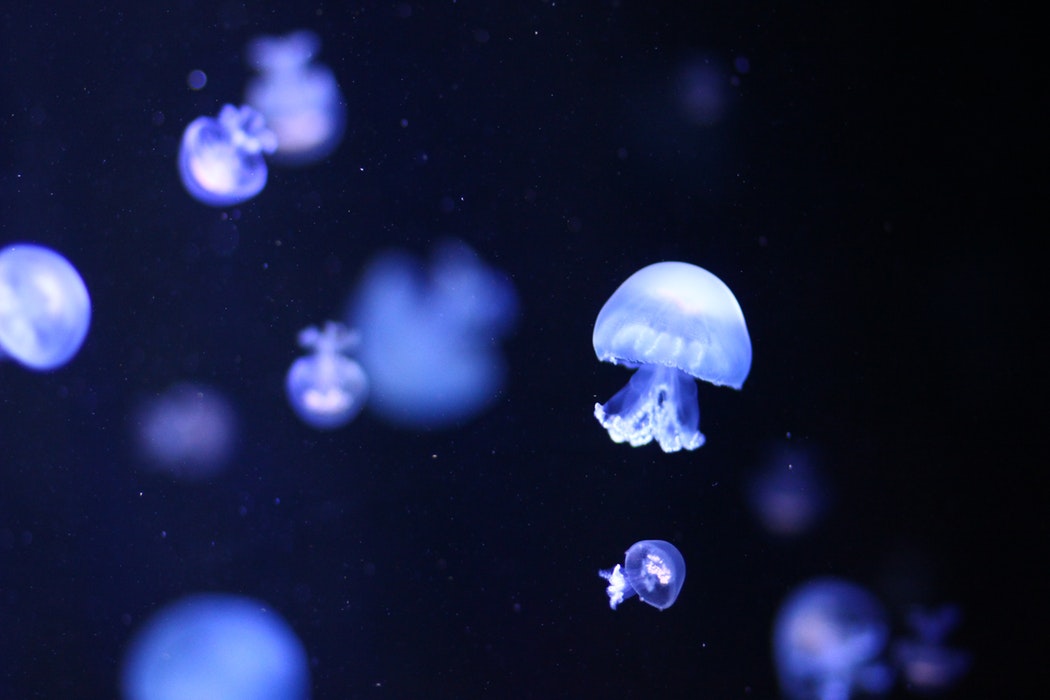Incredible glowing ocean organisms

Bioluminescence is one of the most amazing phenomena in nature. There are small organisms and creatures that live in the ocean that have the ability to glow at night. The glowing comes as a result of a chemical reaction with oxygen, and it’s pretty rare among living beings. Many of these shiny animals use bioluminescence as a form of camouflage, to attract mates, or to scare off predators. Scientists say that almost 90% of deep water marine animals can produce light of some sort. Here are some of the most incredible shiny creatures that illuminate our oceans.
Ctenophora

Ctenophora, also known as the comb jelly, is a type of invertebrate animal that lives in all the planet’s oceans. Ctenophora emit green and blue light and also secretes ink that shines most brightly in smaller comb jellies. The rainbow effect is produced when a light goes through the Ctenophora’s tentacles.
Bigfin reef squid

The Bigfin reef squid lives in warm waters like the Red Sea, around Hawaii, and the Philippines. It’s the squid species that is mostly served up as calamari on our plates. Bigfin reef squid use their bioluminescent skills to both camouflage themselves and communicate. Male reef squid have the ability to change color at the same time as protecting the female squid who is laying eggs at the bottom of the sea. The upper body of the male projects a range of vivid and aggressive colors as a warning sign to predators.
Atolla jellyfish

Atolla jellyfish flash a vivid light show when caught by a predator. The light show functions as an alarm that can be spotted from a distance of 300 ft. The Atolla jellyfish lights are meant to attract prey, not predators, but the chances to eat or be eaten for Atolla are half and half. They have 20 side tentacles and one center tentacle that’s larger than the others that serve to catch the prey.
Dinoflagellate

A dinoflagellate is a group of marine organisms, with most of them being types of plankton. The blooming plankton are the source of the most common bioluminescence event visible to our eyes. The plankton can be seen all around the world, and their lights can be blue, green, and red. The easiest way to see them is if you observe waves at night. At high tide, you can see the glowing waves raging in front of you. At low tide, the plankton get stuck on the sand, so you can only see them if you step on them. The sandy floor will illuminate with each step you make.
Tomopteris plankton

Tomopteris plankton is also called a sea worm, and it’s the only ocean animal that is capable of yellow bioluminescence. When the plankton is disturbed, it releases glowing sparks from its foot-like tentacles, known as parapodia.
Glowing coral

There are many different coral species that glow at night, and almost all of them use the light as a warning sign for small animals not to approach the prickly spines because they could be covered in toxic slime.
Our planet is amazingly beautiful the way it is, without our interference. The glowing ocean creatures belong to the ocean, not in aquariums. Treat nature with respect and educate your kids to do the same. The future existence of many living beings now depends heavily on our own behavior, and the more species we save, the more colorful planet Earth will be.
If you have any comments then please drop us a message on our Outdoor Revival Facebook page
If you have a good story to tell or blog, let us know about it on our FB page; we’re also happy for article or review submissions, we’d love to hear from you.
We live in a beautiful world, get out there and enjoy it. Outdoor Revival – Reconnecting us all with the Outdoors.
